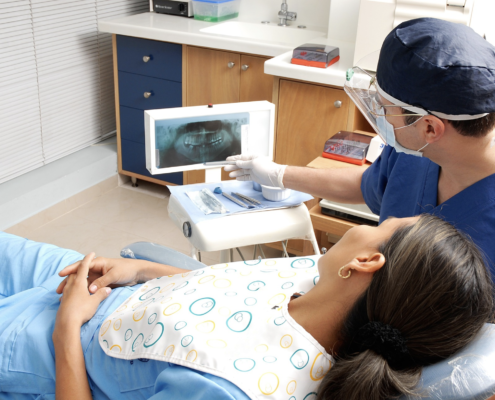Conforming to IHEEM annual AE(D) audit and JAG accreditation
As staff tend to move in an out of procedure rooms where patients are self-administering entonox, we use personal sampling to monitor overall exposure levels during a shift.
Personal sampling tubes are worn by staff throughout their shift.
These tubes are then analysed to determine the amount of Nitrous Oxide/Entonox the team members have been exposed to. Measured exposure is compared to the Workplace Exposure Limit, (100 ppm for Nitrous Oxide) to ensure that exposure is compliant with the COSHH Regulations 2002 (as amended). If high exposures are measured, suggestions for reducing exposure will be made.
Our workplace exposure monitoring helps endoscopy departments to achieve and maintain their annual JAG accreditation which provides important evidence that an NHS or independent UK endoscopy service is competent to deliver against the criteria set out in the JAG standards and fulfil IHEEM annual AE(D) audit part 9.6.
Monitoring allows our customers to demonstrate that the control measure they have set in place in Endoscopy Departments are working effectively as stated in regulation 10 of the Control of Substances Hazardous to Health 2002 Regulations (COSHH), which states that exposure must be below workplace exposure limits and monitoring is appropriate when you need to show compliance with a WEL.
Cairn Technology Limited have an in depth understanding of how Endoscopy Departments work and have the expertise to carry out monitoring with the minimum of disruption caused, to ensure that staff can continue with their works.
To support this, our monitoring consultants are members of the IntelliCentrics Sec3ure Accreditation scheme and are medical industry accredited (MIA) with the credentials required to work within a range of hospital departments.
The JAG accreditation provides important evidence that an NHS or independent UK endoscopy service is competent to deliver against the criteria set out in the JAG standards.
For more information on our personal sampling service click here or call us on 0333 015 4345 for a quote.

 https://cairntechnology.com/wp-content/uploads/2021/11/Alex-scaled.jpg
1080
719
Sarah Clements
https://cairntechnology.com/wp-content/uploads/2023/06/Cairn-logo_RGB-compact-3.jpg
Sarah Clements2022-03-22 04:21:422022-11-29 15:54:45How Do You Test Indoor Air Quality in Hospitals, Schools and the Workplace?
https://cairntechnology.com/wp-content/uploads/2021/11/Alex-scaled.jpg
1080
719
Sarah Clements
https://cairntechnology.com/wp-content/uploads/2023/06/Cairn-logo_RGB-compact-3.jpg
Sarah Clements2022-03-22 04:21:422022-11-29 15:54:45How Do You Test Indoor Air Quality in Hospitals, Schools and the Workplace?




